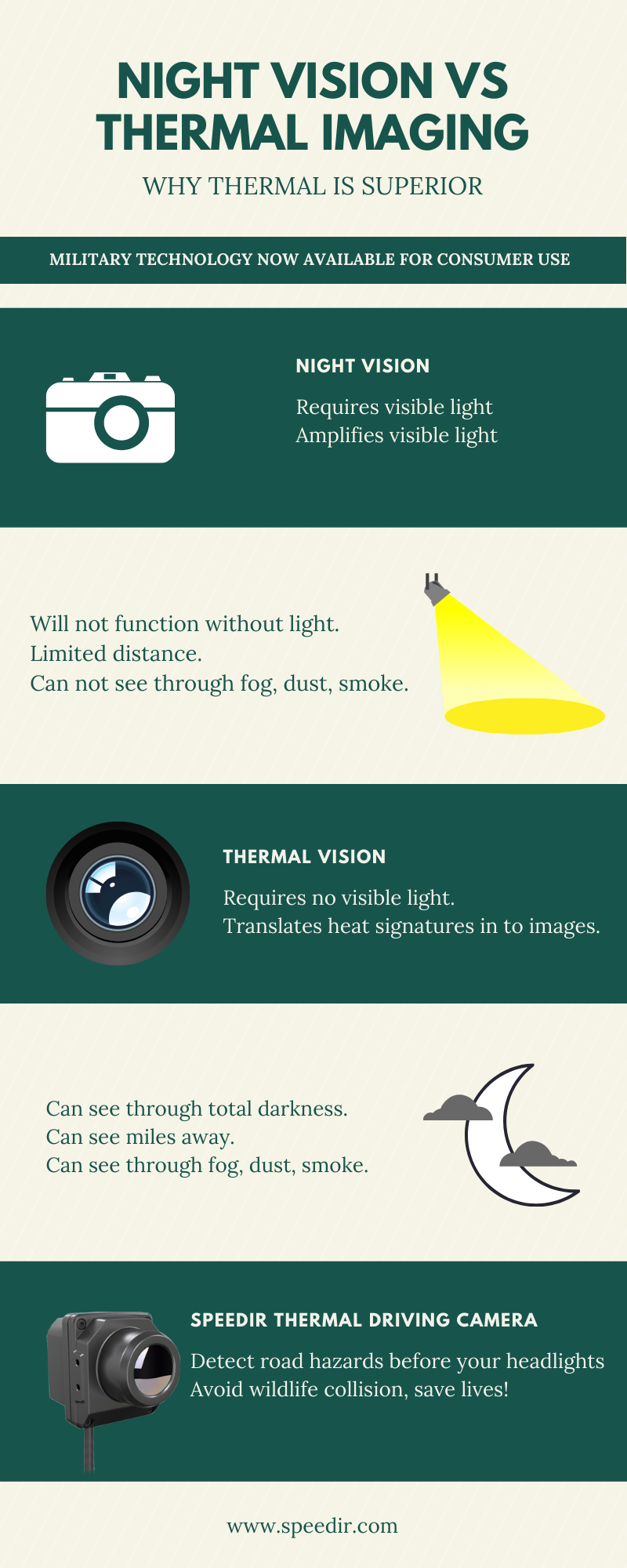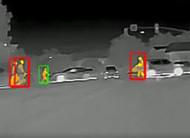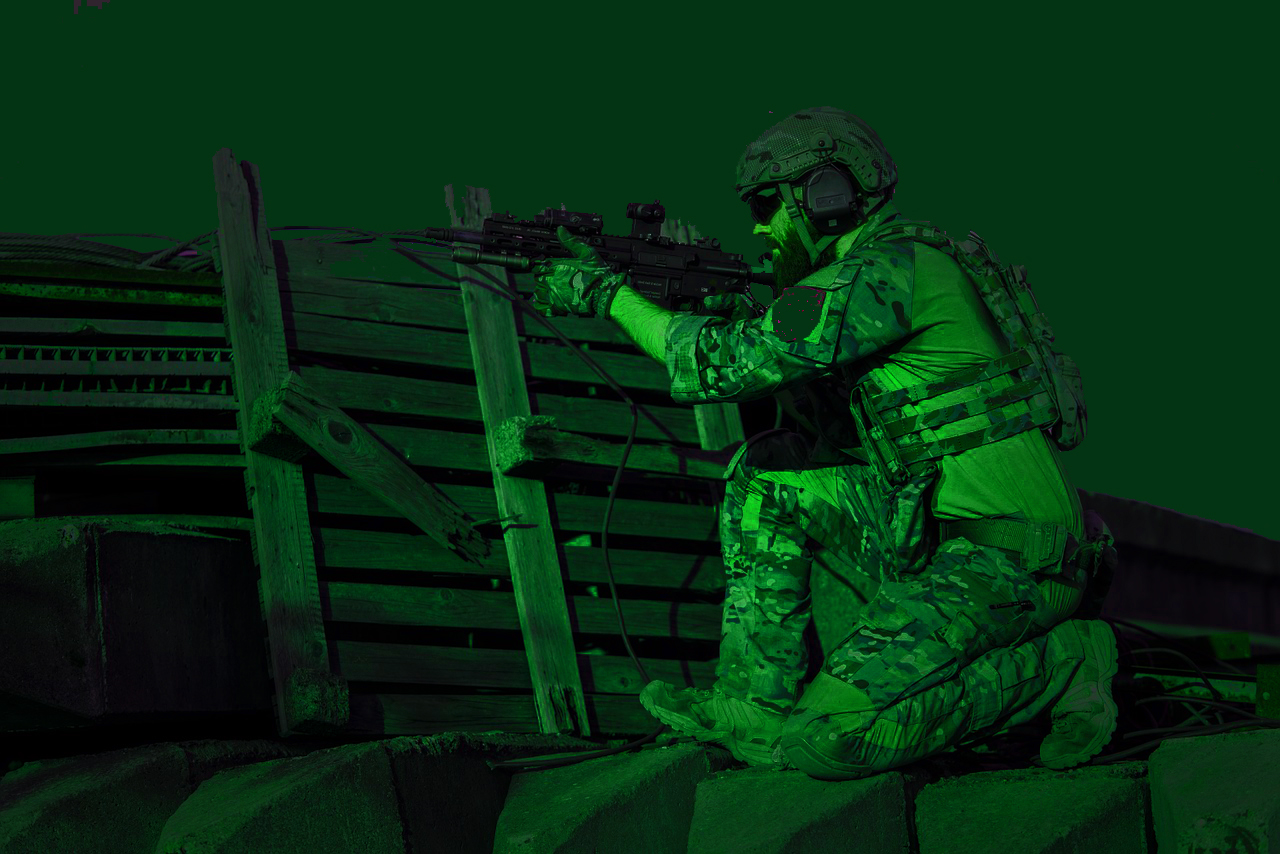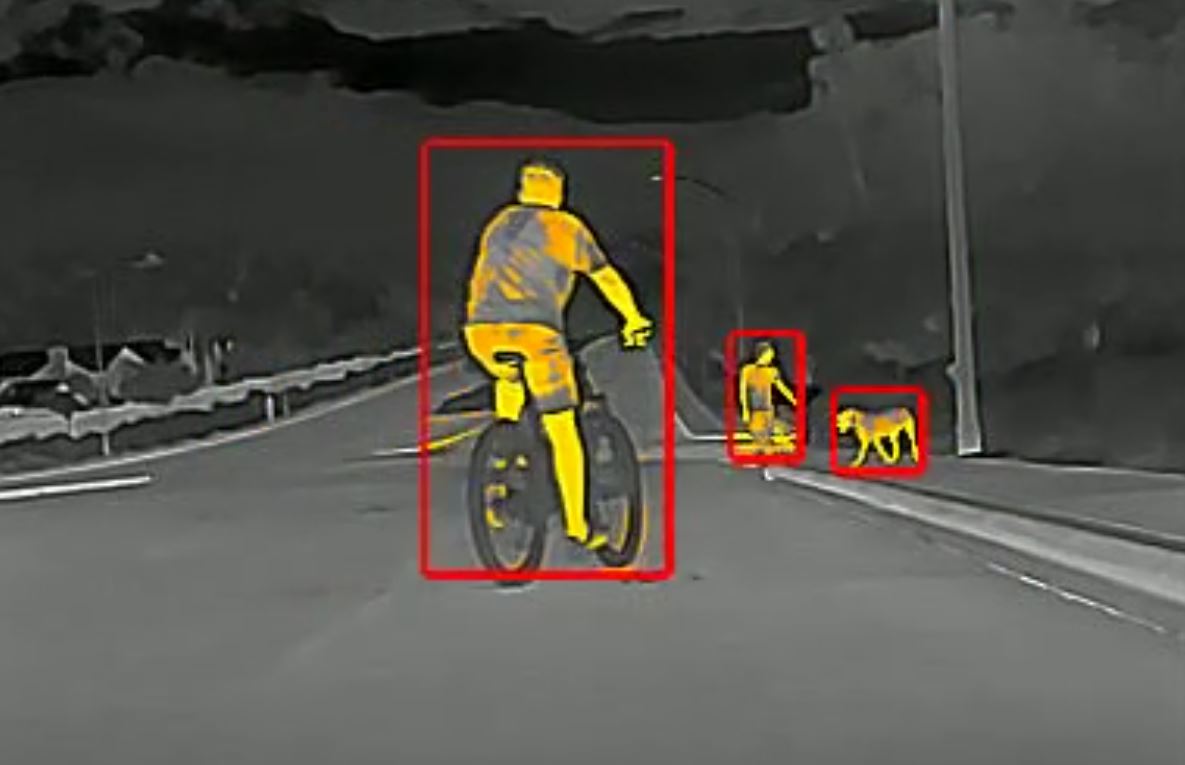Night Vision vs. Thermal Imaging Explained
Posted by Speedir Thermal Vision on 24th Jun 2019
Updated March 2023
Written by Michaela Jackson
We’ve all heard of night vision. This once military-grade tech is the stuff of spy movies and undercover gadgets. What secret agent didn’t don a pair of night vision goggles during their stakeout? Movie cliches aside, what exactly is night vision, and how does it differ from Speedir’s chosen tech of choice for driving safety: thermal imaging?
Nighttime is the most dangerous time to drive. With your vision severely limited by the dark, headlights are only a little bit of help. Oftentimes they are not enough to give you enough time to react when a hazard comes up in the road, such as an animal or pedestrian, and they are notorious for making things worse in heavy rain or fog. So, what is the best solution to help us drive safer in the dark and bad weather?
You might think that night vision cameras could help. In certain situations, they might help with seeing in the dark. Night vision is a technology you might be familiar with, as it was once exclusive military-grade technology, but now it is widely available from smart phone cameras to basic home surveillance systems. However, when compared to more advanced tech, like the thermal imaging cameras produced by Speedir, it is woefully inadequate in helping you see at night while driving.
First, you should know how each technology works on its own, so that they can be compared to see the stark difference between night vision and thermal imaging.
What is Night Vision?
Night vision devices work using the same technology as standard cameras but at greater magnification. These systems scan night settings and absorb any present visible light. This light is then magnified and portrayed through images with a greenish hue. Night vision devices are also called “image intensifier” devices. This is a better, more specific descriptor for them, because the general blanket term “night vision devices” applies to both image intensifiers and thermal imaging or infrared cameras since they all aid in seeing at night.
Night vision image intensifiers are a basic technology that is similar to the standard camera but intensifies any available light. If there is any ambient light around, such as light from the moon, the stars, and distant light sources, its intensity is magnified and is seen through greenish images. This technology is commonly seen by the public in movies, video games, and TV shows, but it is used in real-life scenarios in the military, law enforcement, and by hunters to detect wildlife like deer in the woods at night.
The major pitfall of night vision image intensifiers is that its effectiveness decreases as nearby light decreases. This means that if the night is cloudy and overcast, blocking the light from the moon and stars, there is a dramatic decrease in the clarity of the night vision image. The same is true if fog is present, and intense rain can reflect light off many different surfaces, making it difficult to see clear images.
While night vision image intensifiers are perceived high-tech, they are not much more elevated than a standard camera, and some people find it harder to see clearly through the green-filtered image. They only work if there is available light and clear conditions but are generally cheaper than a thermal camera.
What is Thermal Imaging?
Thermal imaging, or infrared (IR) imaging, is a technology that uses infrared scanners that measure the heat signatures of objects as compared to other objects around them, and translates those heat signatures into an image where the higher heat signatures are highlighted brighter and easy to see. This technology has many applications in many different settings, but not everyone is aware of its extensive usefulness.
The major pro of using a thermal imaging camera is the fact that it requires no light to function, and strenuous weather conditions do not affect its function either. Through fog, smoke, overcast or dust storms, the thermal imaging camera will always show reliable, clear pictures that detect potential road hazards with heat signatures. This feature makes it the most favorable technology in the night vision business and sets it apart from the rest of its competitors. In fact, law enforcement has been known to use thermal detection technology to detect suspects who have hid in shrubbery or other obscured places at night.
The infrared sensors on thermal cameras are also incredibly high range. When on a car, a thermal camera like the Night Owl by Speedir can see up to 3000 feet beyond your car’s headlights. This distance is incredibly useful to any driver and can greatly increase your reaction time when faced with sudden road obstacles.
The only perceivable drawback of thermal imaging cameras is the fact that they are more expensive than night vision cameras. However, they have become increasingly affordable over the years thanks to companies like Speedir, who are producing these cameras to help increase road safety for everyone. Now these cameras are accessible to everyone, from the military to the civilian.
Difference Between Night Vision and Thermal Imaging
The differences between night vision vs thermal imaging are:
- Night vision needs nearby visible light to work properly. Thermal imaging does not need any light to function.
- Night vision works by amplifying nearby visible light. Thermal imaging works by using infrared sensors to detect differences in temperatures of objects in its line of sight.
- Night vision takes a scene and magnifies the light, then translates it into green-tinted images. Thermal imaging translates heat signatures into clear viewable images, and objects with higher heat signatures are shown in bright yellow, orange, or red color.
- Night vision is impaired by conditions like dust, smoke, overcast nights, rain, and fog. Thermal imaging is not impaired by these conditions and can see in complete darkness.
- Night vision is an outdated technology that, while it still has its uses, is cheaper but lower quality than other options. Thermal imaging is a highly coveted technology that, while it can be more expensive than other options, increases safety at night better than its competitors and is still affordable.
Which is Superior, Night Vision or Thermal Imaging?
As you can see, there are many notable differences between thermal or night vision cameras, and the winner for the best camera for nighttime driving safety goes to the thermal camera. With its extensive range, infallible heat detection, and high-quality images, response time for obstacles in the road at night will increase and so will your peace of mind.
However, there are many more uses for the thermal imaging camera than driving during nighttime.
Every Second Matters, Every Inch Matters
When deciding on the question of thermal vs. night vision in vehicles, what we’re really getting at here is the time that’s provided for a driver to react to potential danger. As mentioned above, Speedir thermal imaging technology allows drivers to see potential obstacles and dangers up to 3,000 feet away. That’s nearly 6/10ths of a mile. Many night vision cameras that either come standard on some high-end vehicles or that can be added on an aftermarket basis only have vision fields of a few hundred feet, and that’s assuming there is enough light present to provide for dependable imaging to begin with.
When looking at thermal vs. night vision technology, that extra 2,500 feet or so – which is nearly a half-mile – provides the driver of a vehicle at night with approximately 25 extra seconds of reaction time if the vehicle is moving at a rate of 60 miles per hour when a form of danger enters the pathway of that vehicle. Almost anyone can safely react to something within that amount of time. In contrast, night vision may only provide a driver with 5-6 seconds of reaction time if the same vehicle is traveling at the same speed.
Seconds and inches save lives, and there’s no way around that. Night vision vs. infrared technology, in our opinion, is not a difficult choice. Even if people still wonder what thermal vision is and even if they’re concerned that it may cost a bit more, one accident avoided more than pays for any additional investment. When thinking about the thermal vs. night vision technology question, you should think in these terms as that’s what using this technology is for in the first place.
Best Uses for Thermal Imaging Cameras
Thermal imaging (or infrared) cameras have several uses for people and companies alike thanks to their superior night-seeing and detection technology.
Uses for the thermal imaging camera include:
- Aiding nighttime drivers: The infrared camera offers high visibility in low-light situations, which is ideal for those who must drive during the night. This is especially true for people who live in rural or mountainous and forest areas where wildlife is more prevalent. This also applies to those living in more densely populated areas like cities and suburbs where pedestrians are more prevalent and there may be outdoor pets commonly roaming the streets.
- Parents: If you are a parent who has a child who will soon be learning to drive, is learning to drive, or has been driving for a while, you may get nervous when they need to drive at night. Anything can happen on the roads at any time, but infrared cameras offer a layer of protection and peace of mind for parents who want to make sure their kids are driving as safely as possible.
- High-dollar vehicle owners: Those who own luxury cars, RV’s, company cars or high-end trucks that haul valuable assets like boats or other cargo need to protect their vehicles from any potential threats. These cars are huge investments, and any way to help keep them safe, especially at the most dangerous time to drive (nighttime) is simply smart asset protection.
- Companies who employ nighttime drivers: There are many industries that employ nighttime drivers who can prevent losses from collisions by installing infrared cameras in their vehicles. Industries include ridesharing companies and their drivers, truck fleets, public transportation, rental car companies, military and law enforcement operatives, ambulance service providers, firefighters and delivery drivers.
- Military and law enforcement applications: Infrared cameras can be used by military personnel and police organizations not only for driving but for detecting subjects in low-visibility situations, seeing concealed weapons on suspects, and tracking in pursuits.
- Firefighting: An infrared camera can easily detect a fire, the worst spots of intensity, and can show doors that are unsafe to enter because of fires on the other side. These cameras are best for this situation because they work despite the heavy layers of smoke that might surround the area of the fire.
- Hunters: When out hunting, especially at night, hunters can use infrared cameras to track where prey is most common in stakeouts and can help greatly in seeing undetected animals in deep brush, water, or forests.
More recently, thermal imaging cameras have been being used by businesses for fever-detection in the COVID-19 pandemic. In fact, Speedir, one of the leaders in the thermal imaging industry, has recently come out with a thermal mass fever screening system with artificial intelligence capabilities to help keep companies safer during these trying times.
Quality Thermal Cameras from Speedir
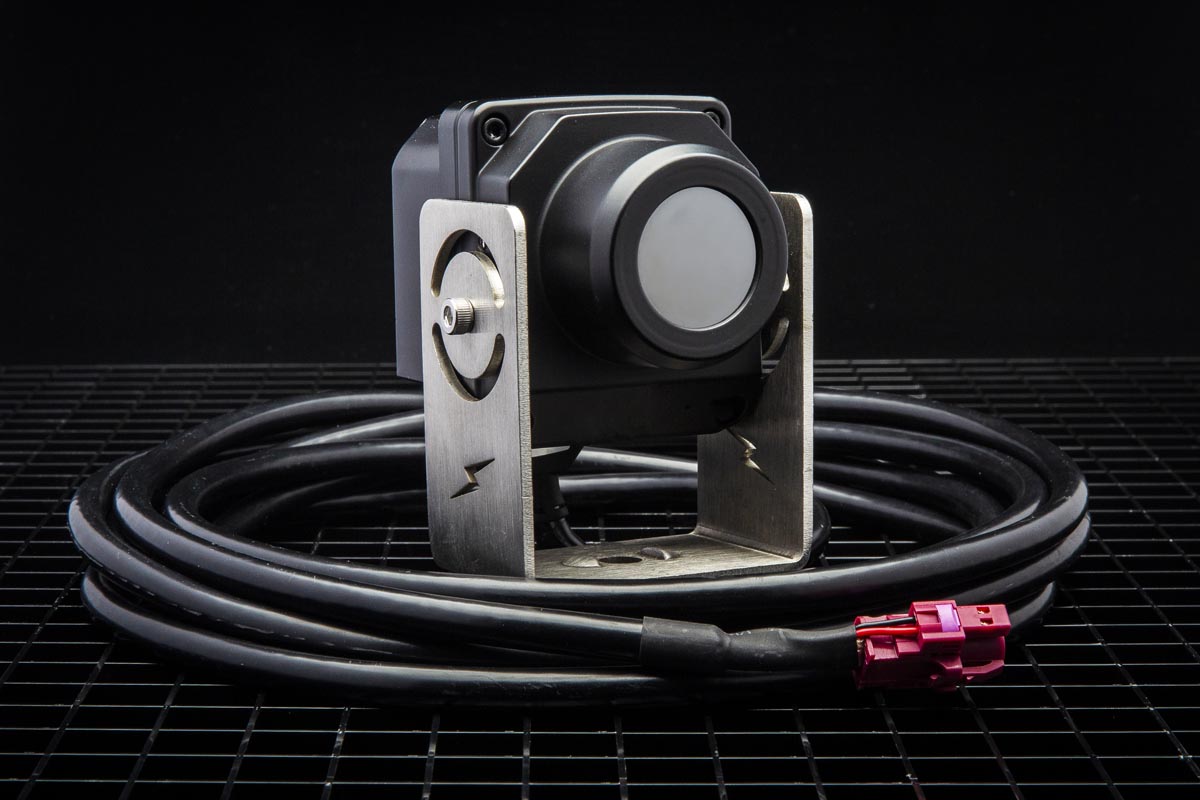 Speedir, as mentioned before,
is a company who provides state-of-the-art thermal devices that are the fruit
of over 18 years of research and development that also provides thermal cameras
at affordable prices so that you can drive safer in low-visibility conditions.
Their cameras are known for their high-range capabilities at up to 3000 feet
beyond a car’s headlights, and their extensive testing guarantees that their
infrared sensors will produce high-quality images to alert you to obstacles in
the road.
Speedir, as mentioned before,
is a company who provides state-of-the-art thermal devices that are the fruit
of over 18 years of research and development that also provides thermal cameras
at affordable prices so that you can drive safer in low-visibility conditions.
Their cameras are known for their high-range capabilities at up to 3000 feet
beyond a car’s headlights, and their extensive testing guarantees that their
infrared sensors will produce high-quality images to alert you to obstacles in
the road.
The cameras provided by Speedir include the Night Owl and the Night Owl Plus with Artificial Intelligence. Both cameras are top-notch quality, with specs like 384x288 thermal sensors and 720x480p output resolution. These cameras are customizable, can be fit to any vehicle, and are proven to work in any weather conditions.
If you are in the market for improving your nighttime driving, mitigating risk while driving at night, or getting protection for the nighttime operations of your company, Speedir has the products for you at great prices.
For more information on these thermal cameras or other products, please contact info@speedir.com or visit the Speedir website.
